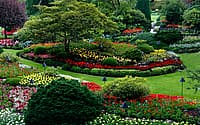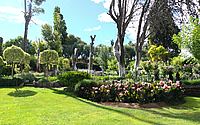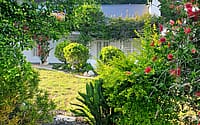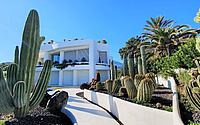Building Beauty: Natural Landscaping Methods for Controlling Weed Growth
If you’re working on perfecting your landscape, you probably understand that there are many nooks, crannies, and hidden parts of your landscape to take into consideration. And if you live on a large property with extensive acreage, then you may just have your work cut out for you.
In the past, many landscapers have used chemical control to keep weeds from emerging or returning. But this can not only be harmful to you and your family, it can be harmful to the soil and the environment as well.
Thankfully, there are many proven natural methods that you can use to keep weeds under control. And none of them will create a danger for you, your family, or the environment. In fact, many of these methods can actually help to create a better landscape that’s healthier for the ecosystem.
If you’re looking to beautify your property and perhaps add a bit more curb appeal, the following will offer a few weed control methods for you to consider.
Hand-Pulling
One sure way to rid your landscape of pesky weeds is definitely by the sweat of your own brow. While hand-pulling weeds is a time-consuming task, for any natural weed control methods to work effectively, you need to hand-pull first.
It’s good to note that if you have a large property, hand-pulling might not be an effective option. Let’s face it, nobody wants to hand-pull weeds over an entire 5-acre spread of land. But when it comes to clearing gardens or cleaning up along fence lines and structural perimeters, hand-pulling weeds can actually be the best option.
When you hand-pull weeds, you’re removing them in their entirety, roots and all. And as mentioned, this is the first step in clearing your property of larger growth before you can implement other steps.
Mulching
Many gardeners and landscapers use mulch after hand-pulling as a highly effective method for deterring weed growth. And this is because a thick layer of mulch applied after hand-pulling can help to prevent weeds from reseeding, or even from reemerging altogether.
As a landscaping element, mulch can be used around trees, in flower beds, along fence lines, and around structural parameters such as your home or any other structures on the property. Basically, anywhere you wish to create a garden or add an aesthetic element, you can use mulch for both weed prevention and landscape design.
Additionally, using mulch helps to reduce the need of using chemical herbicides which have been known to cause cancer and other health concerns for landscapers, along with farmers and laborers and anyone else who has handled these types of chemicals frequently.
Plastic Layering
After hand-pulling areas, specifically within gardens, along pathways, fence lines, and perimeters, before mulching, one great technique to experiment with for weed control is to use layers of Visqueen or plastic as a control layer to keep any weed growth from surfacing.
Most commonly used around trees or pathways, or anywhere mulch is being used as a landscaping element, plastic or Visqueen layering offers a barrier between the mulch and the soil. And this method further contains or suffocates any potential growth that may occur if weed roots or seed remains in the soil after pulling.
Solution Sprays
Finally, when attempting to control weeds naturally without using any harmful herbicides, making up a natural solution of salt water, or of mild dish soap, salt, vinegar, and water is a highly effective method for killing weeds that you missed while pulling.
Most white vinegar that you can purchase at grocery stores contain 5 percent acetic acid, and this is usually potent enough to kill off most weeds that proliferate in gardens. Additionally, dish soap helps the solution adhere to the plants, and this also begins to suffocate them as well.
It’s also good to note that using too much salt can have a negative effect on soil profiles. As such, avoid overuse of salt solutions. And keep in mind that this can also chemically change the color of concrete through salt crystallization.
Use caution when spraying saltwater solutions near pavers or other pathways that you may have incorporated into your landscape. As a rule of thumb, apply the solution to the weeds only, and avoid spraying the soil directly.
Landscaping techniques can be quite useful when attempting to get rid of weeds and to shape your landscape in such a way that offers weeds little room for proliferation. By applying these methods, you should be able to maintain a weed-free landscape as long as you regularly tend your property.
- by Matt Watts







